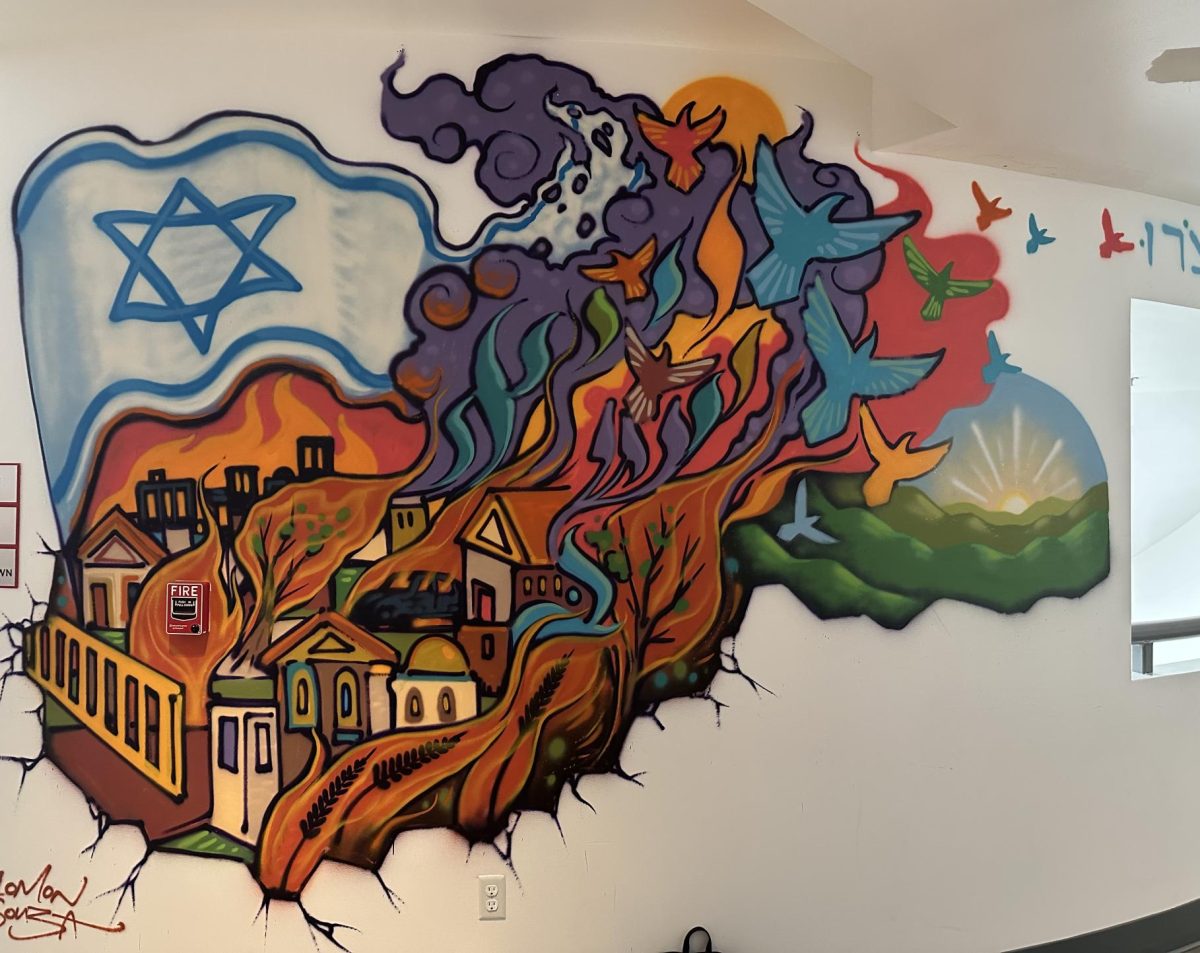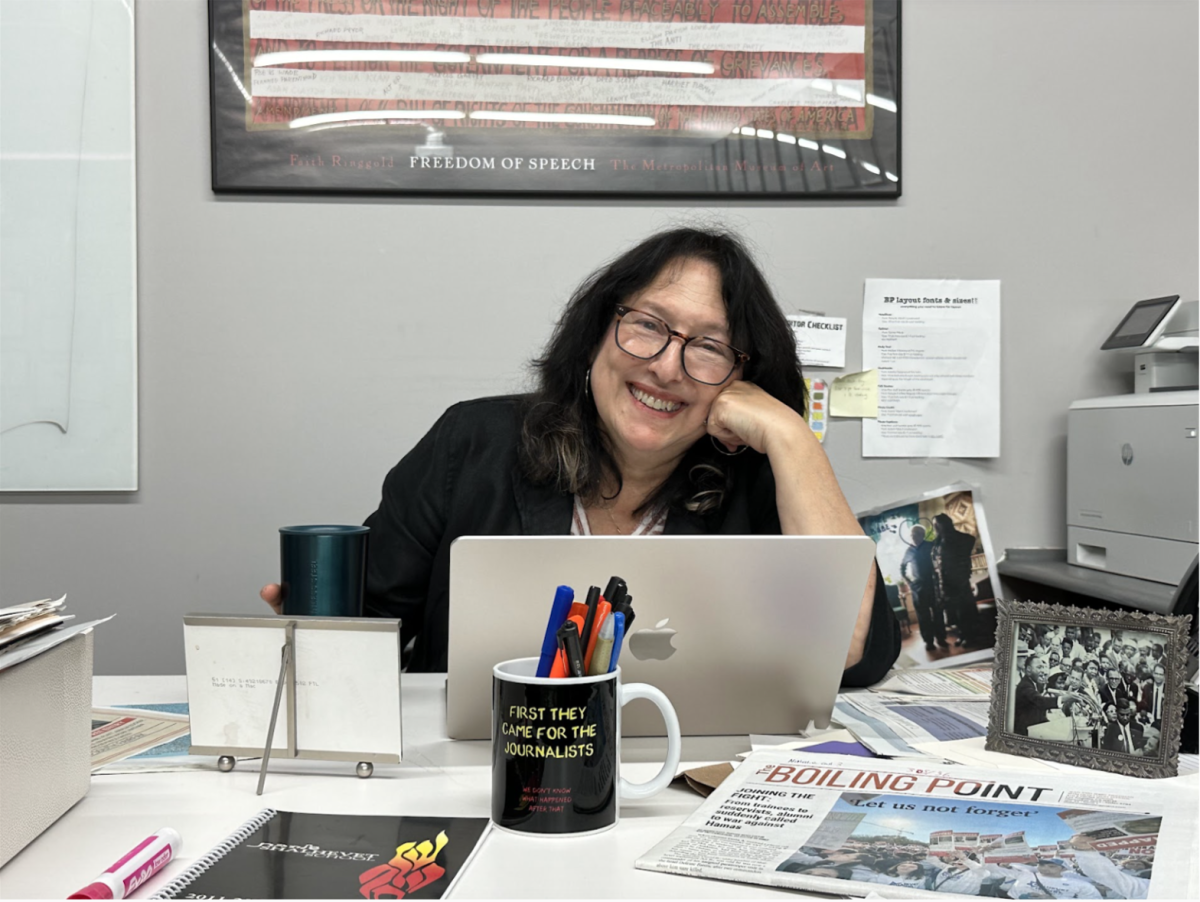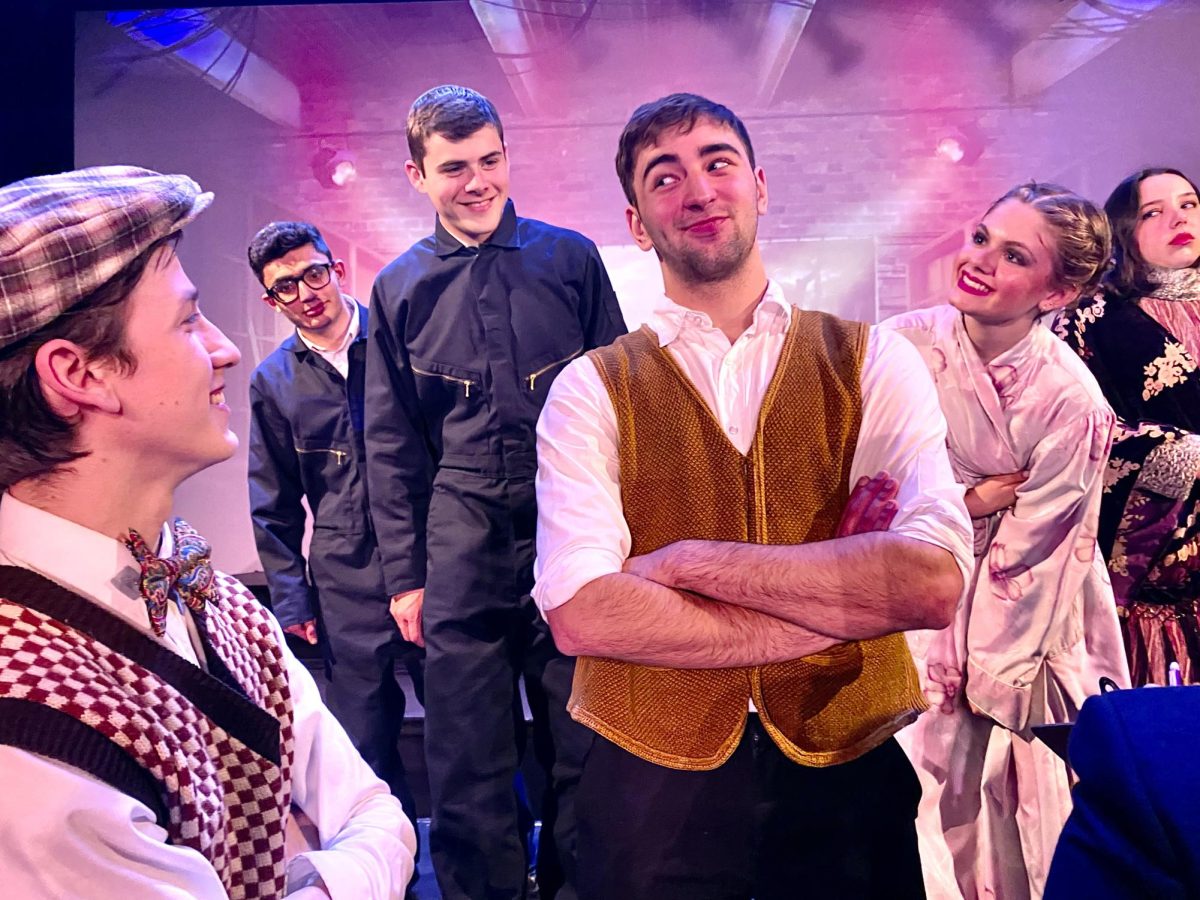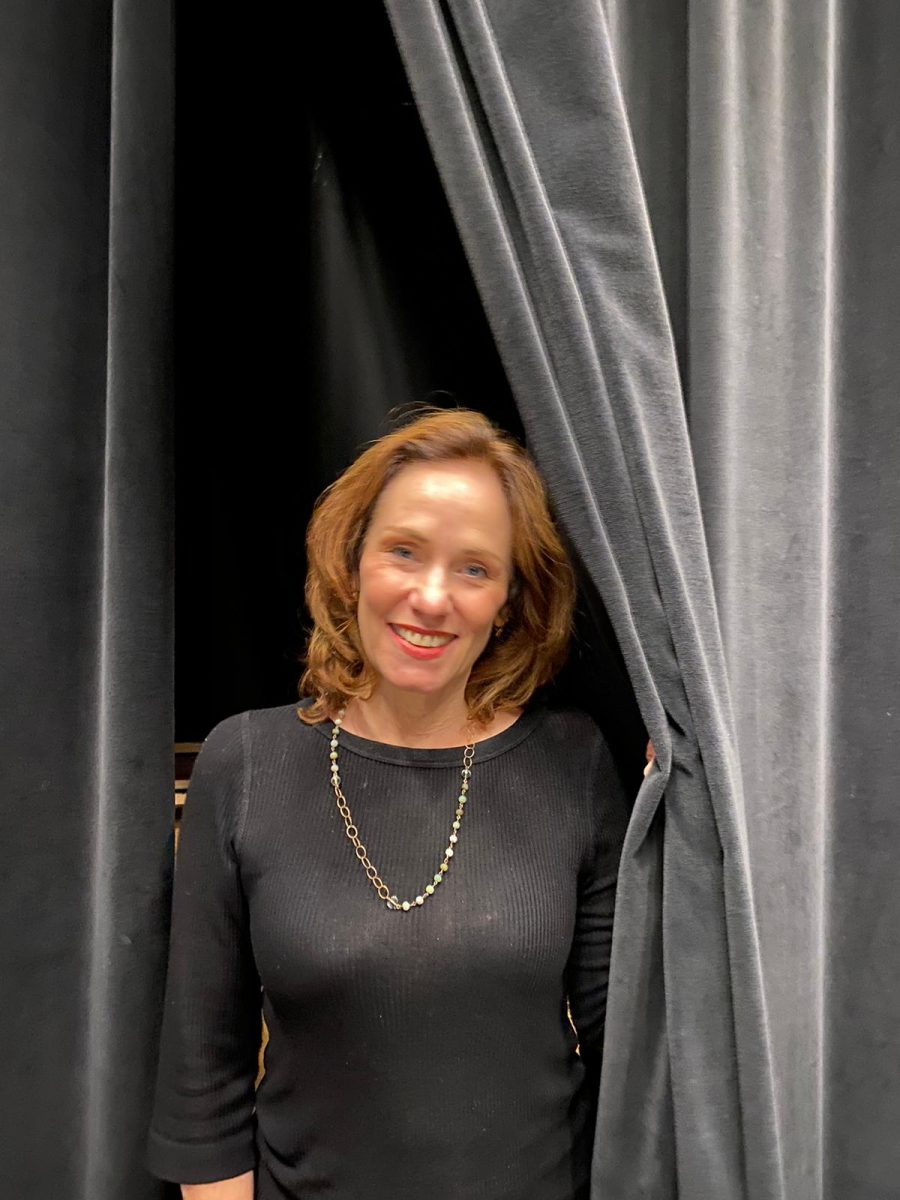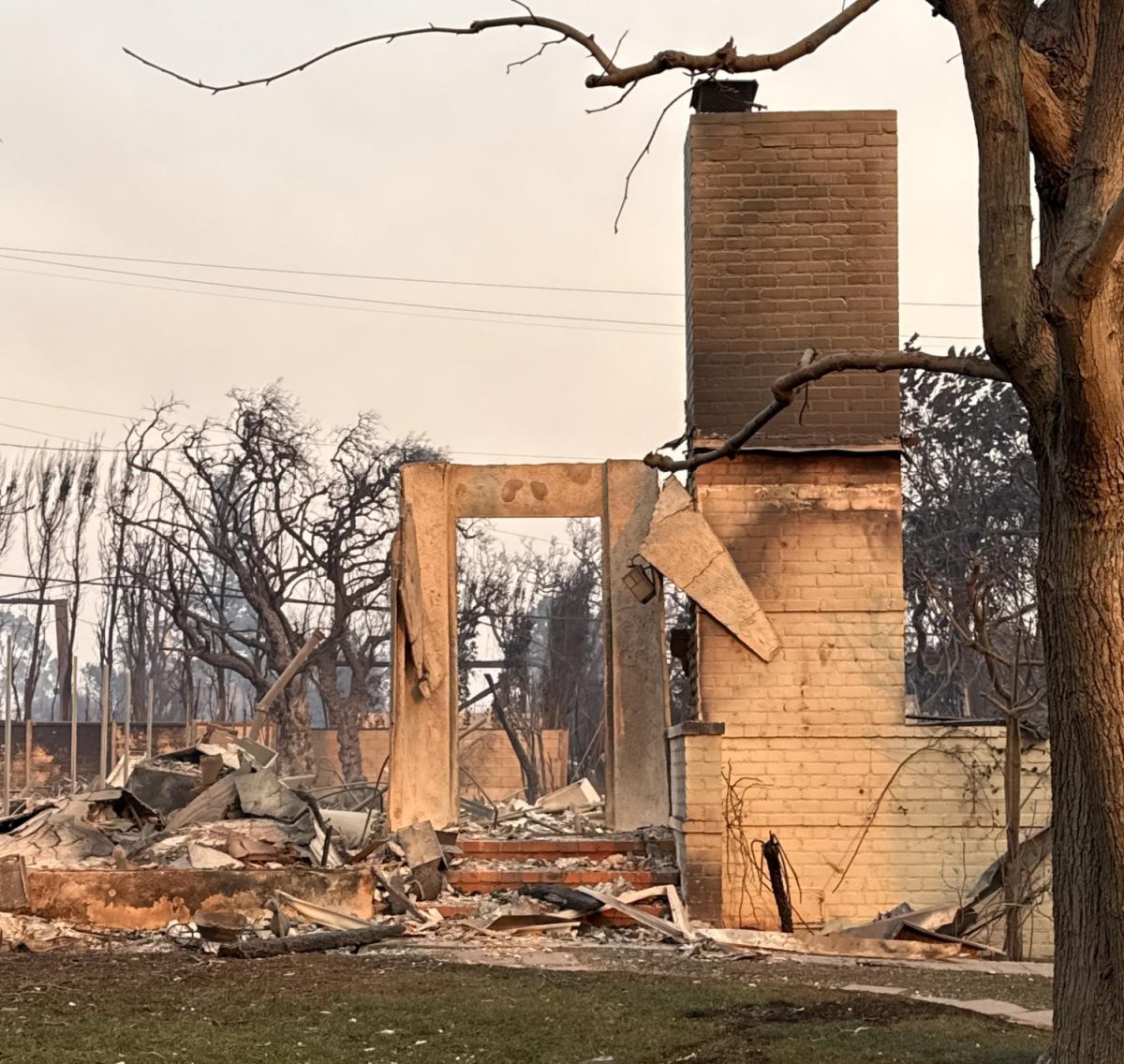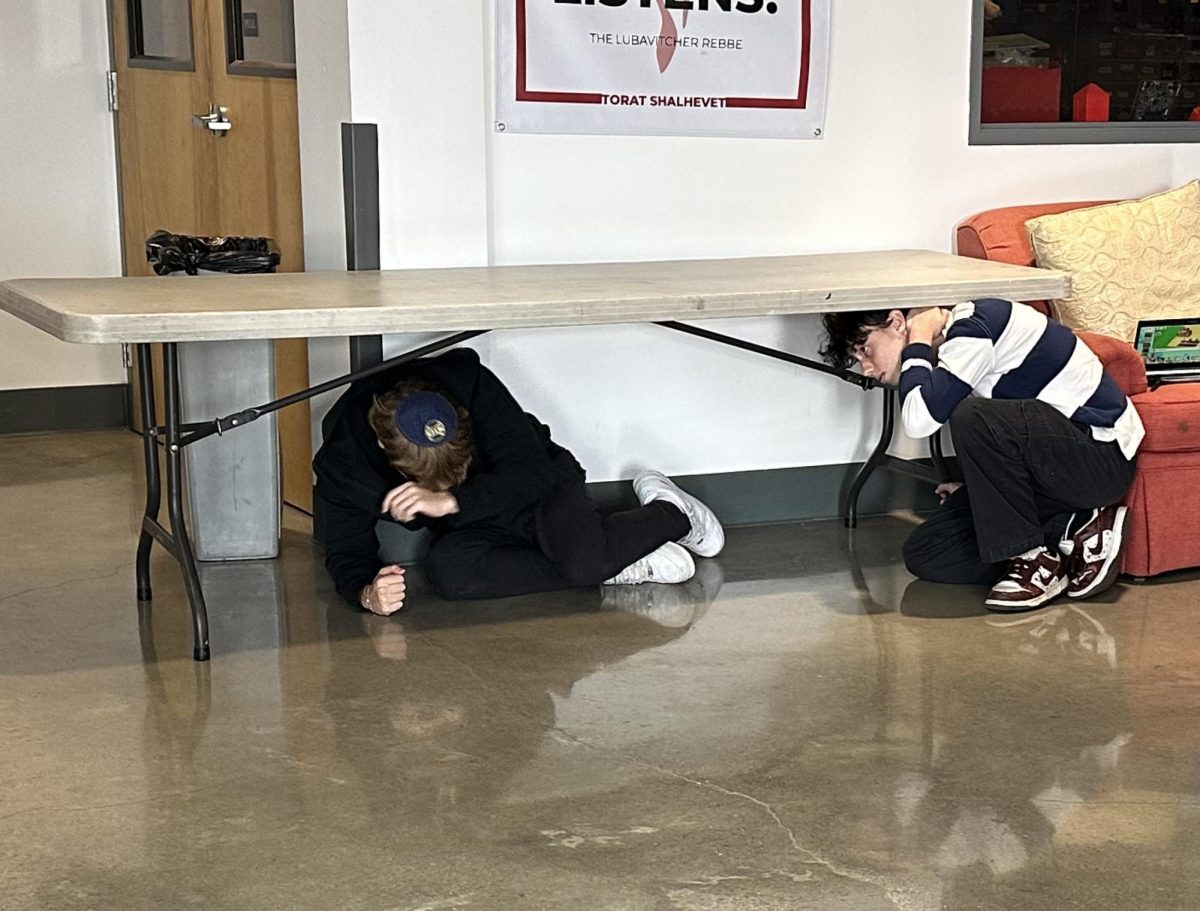Hanging right outside of the art room, Micha Zana’s latest work is at once complex and frustrating in its simplicity. A group of kitchen utensils is nailed to a simple plywood canvas, and painted. The entire composition leaves you wondering what exactly attracted you to the piece.
“Figure it out,” said Micha, breezing by it during a free period last week. “It’s obvious.”
But perhaps understanding an artwork is not as important as not being able to let go of what it looked like. In AP Studio Art, the students have to understand that if they want us to keep looking at their work – which they do – they must let go of their urge to find the one right answer.
“AP Studio Art tests individuality, and makes you think,” says AP Art senior Danielle Roth. “You start with an idea, and then you have the freedom to explore it on your own. It kind of gives you your own insight as to what you want it to be. It’s also very liberating.”
A record 18 juniors and seniors are enrolled in AP Art this year. Taught by the art teacher and Performing Arts Department chair Roen Salem, the two-year course aims for students to complete at least 25 pieces of work for submission in May of their senior year, hopefully for college credit.
The artists say the class is a way for them to relax, express themselves, and in some cases even prepare for a career. Ms. Salem – known to everyone simply as Roen, ensures that the classroom becomes their studio.
There’s easy talk around the long tables, and on some days Eminem beats crack through an iPod. Ms. Salem makes of point of ensuring that the class does not smother the artists.
“They are maturing, coming into their styles,” Roen said. “As students get farther into the course, they start to learn from each other.”
The AP structure requires each student to focus on a “concentration” – that is, a body of related art pieces that explore a particular artistic concern. Anything from landscapes based on experience, to interpretative self-portraiture, can be a concentration. Creating 25 works on one topic is part of what forces the students to think.
Danielle said any artwork starts with an idea, which the artist then expands into the piece he creates. In the case of a concentration, you begin with materials and then try to use them to express something about the subject. A group of random objects could be formed into a sculpture in the shape of something relevant, or jumbled into a collage that represented the subject’s complexity.
Danielle’s theme is the Middle East. Among other things, she’s painted several hamsas – the symbolic flat hand that is a Middle Eastern symbol of protection from evil. One became a reaction to last fall’s school wide Community Service Day, when students met with Holocaust survivors and heard their stories, one on one.
“I was really influenced by my survivor,” Danielle said, “and so I went back to AP Art and I was like, okay, I’m going to create one that has to do with the Holocaust.”
She painted a hamsa with arms and legs, whisps of chalky train tracks across the top, and a tear dripping from the eye on the palm. The survivor she had met with had a number from Auschwitz tattooed on her arm, so she drew a number on the arm of the hamsa.
“I used chalk so it would look a little faded, like a memory,” she said. “And I made the eye blue, but the background was gray and black. The blue symbolized such innocence, because this girl was young, and the grey because it was just such a dark time, and it was so awful.”
Students work independently and in addition to their concentrations, must come up with their own artistic “themes,” ranging from perspective to “dark bright colors” or even the “slightly unusual.” Roen advises and gives suggestions to help students explore creative freedom.
Junior David Fletcher’s concentration is perspective. In one of his paintings, purple mountains that look as if they never end are approached by a black road with thick white lines that also seem infinite. There are clouds in the background.
“I’m taking the class because I may want to pursue a career in architecture or engineering,” David said.
A painting by senior Rachel Lesel portrays a woman sitting by a record player. The entire picture is neutral or red, except for the woman’s face, which has been replaced by a zigzag of rainbow colors.
“It’s a disgusting room and here she is in a fancy dress, with no face,” said Rachel, who is considering striking contrast of background and the central image as her concentration. “It symbolizes how alone we are, and she’s beautiful. If you’re trying to be unique, you’ll be alone. And there’s nothing wrong with that.”
Last year, every student who submitted a portfolio received a three or higher from the AP board, meaning they could get college credit for the course. Alumni of the class have gone to schools such as Otis College of Design, USC’s School of Architecture and the Fashion Institute of Design and Merchandising (FIDM).
Roen makes admission to the class competitive. Applicants must submit a self-portrait, a landscape and a still life by the end of May the year before they intend to join the class, usually at the end of 10th grade. If Roen approves their drawings, they are immediately accepted.
If she’s unsure, they must draw 100 sketches to be reconsidered. Sometimes, current AP students assist in the admissions decision.
Micha Zana’s concentration is also perspective. In his artwork of utensils nailed to a board, a shiny white horizon is detailed by contrasting black and white polka dots.
Over the arrangement are painted two cartoon characters — a bright red rat smiling a toothy grin, and a light green character that looks upset or afraid. Perhaps the green cartoon fears the rat – or the lit bomb in his hand.
Then again, perhaps it’s not about fear but just about whimsy. Or something else. The point is mostly that you wonder — and come back to wonder again.
Senior Staff Writer Leona Fallas and Staff Writer Ariela Feitelberg also contributed to this story.

